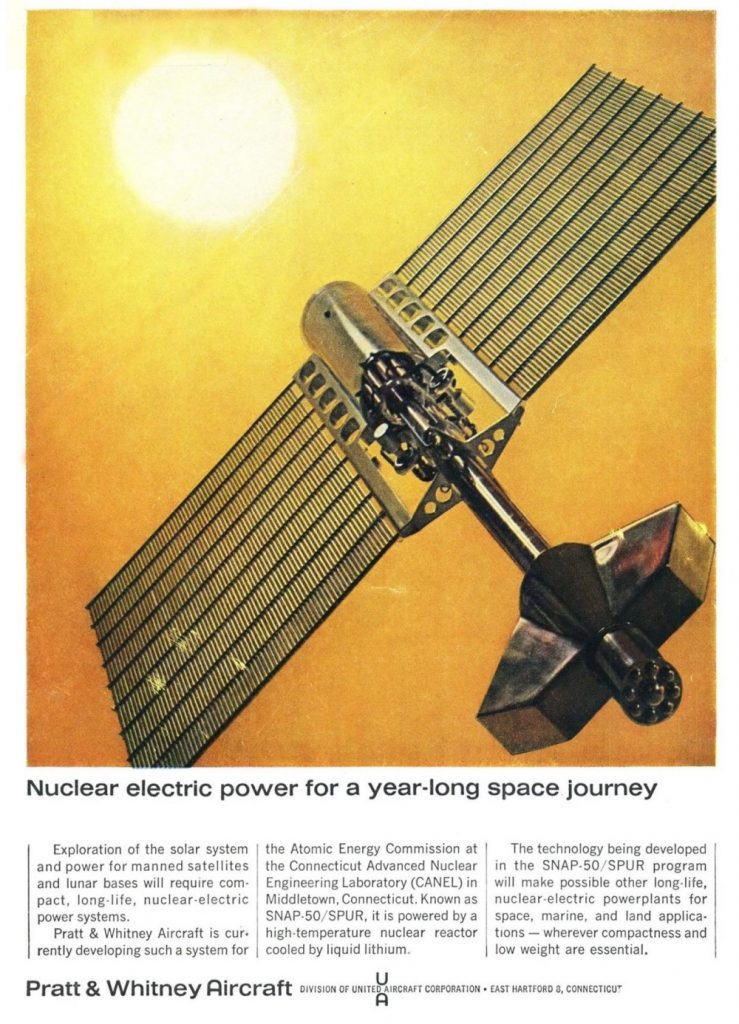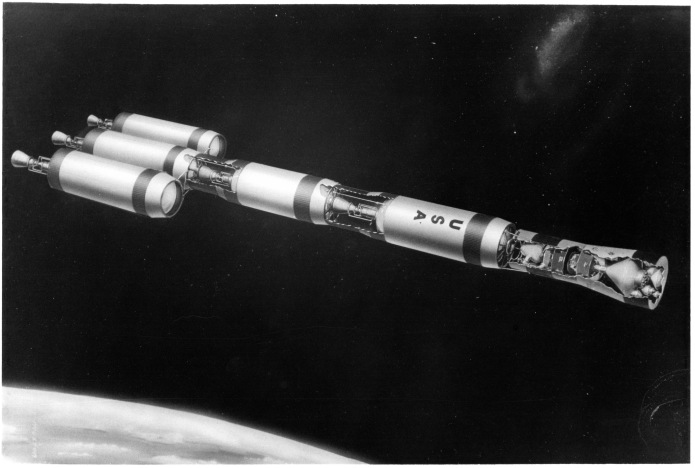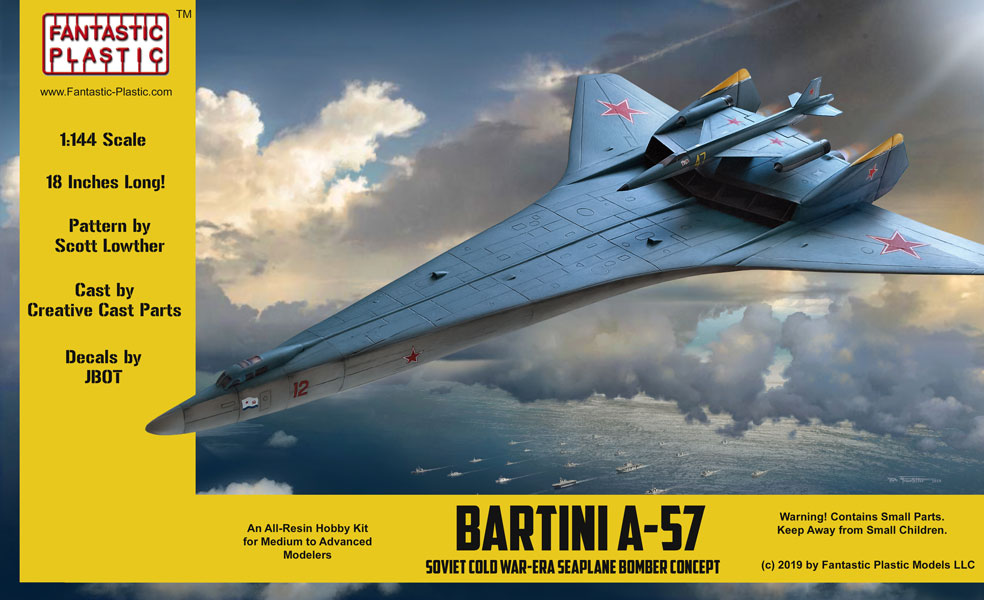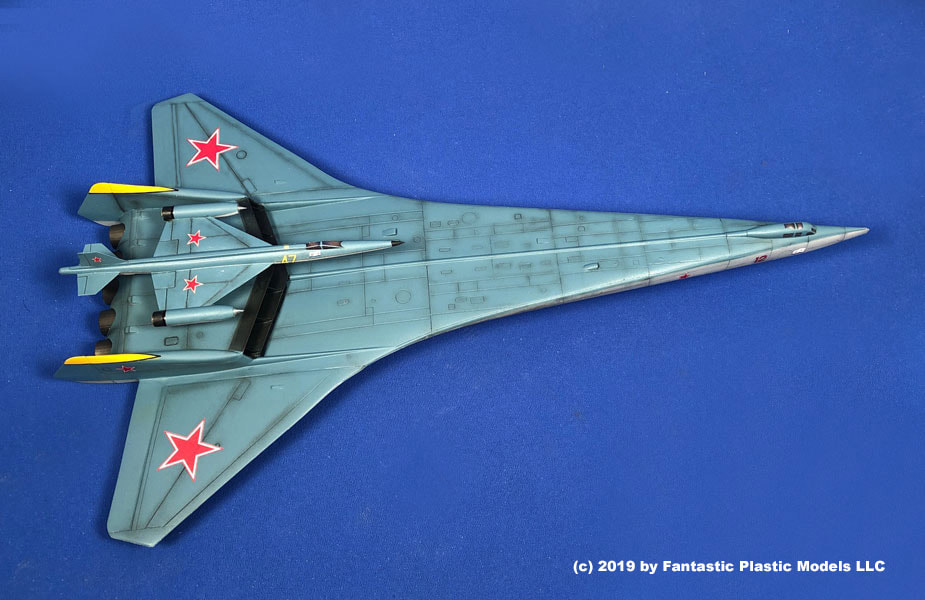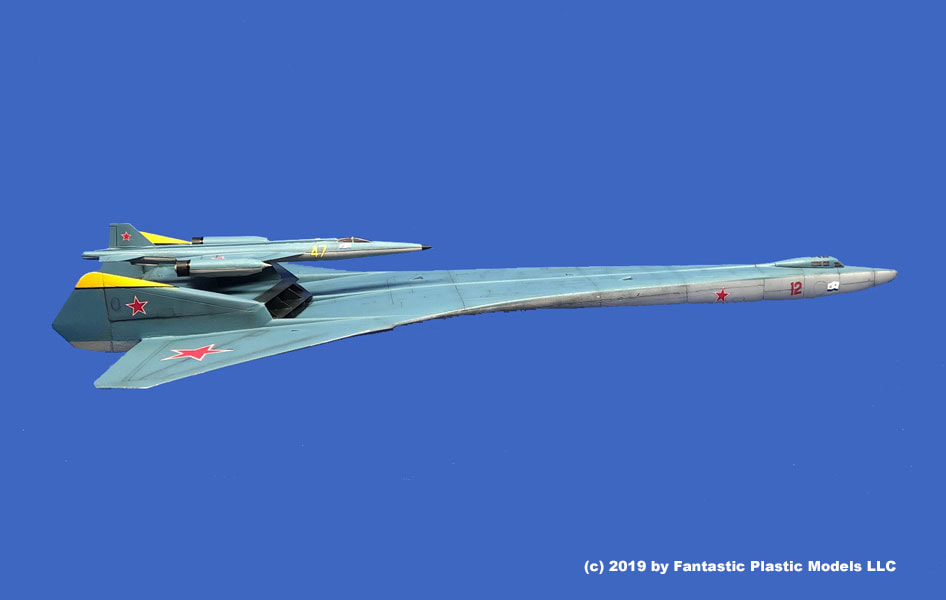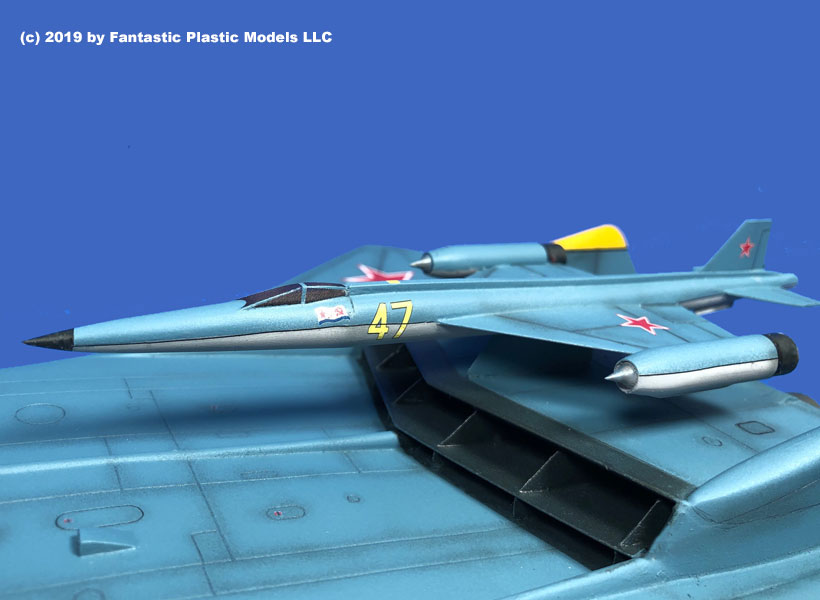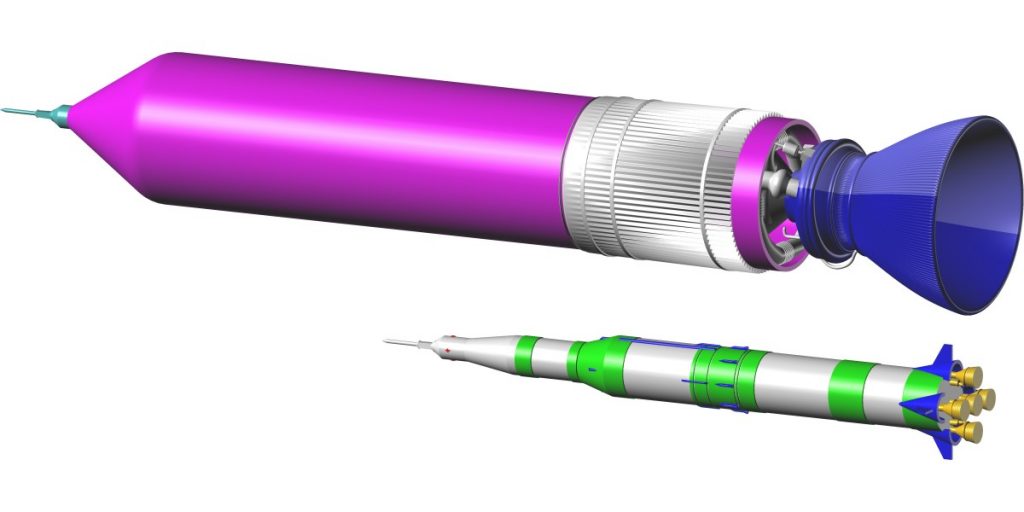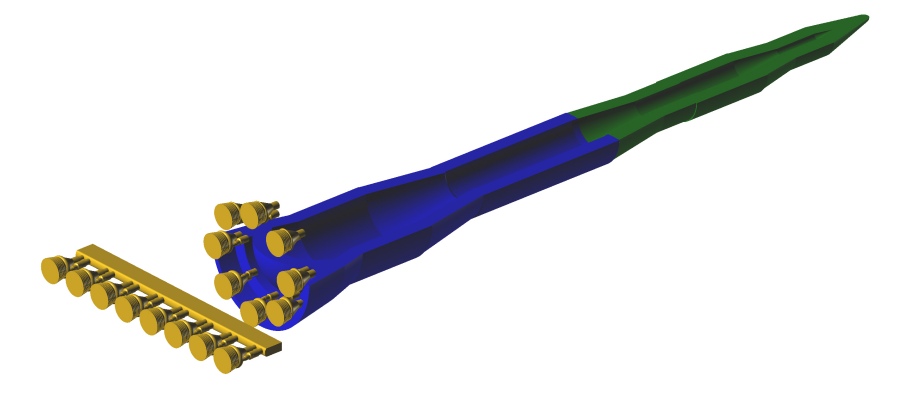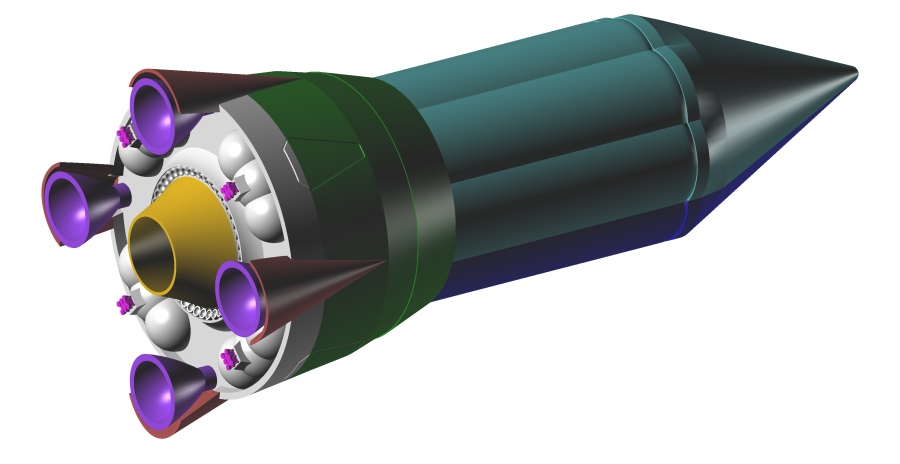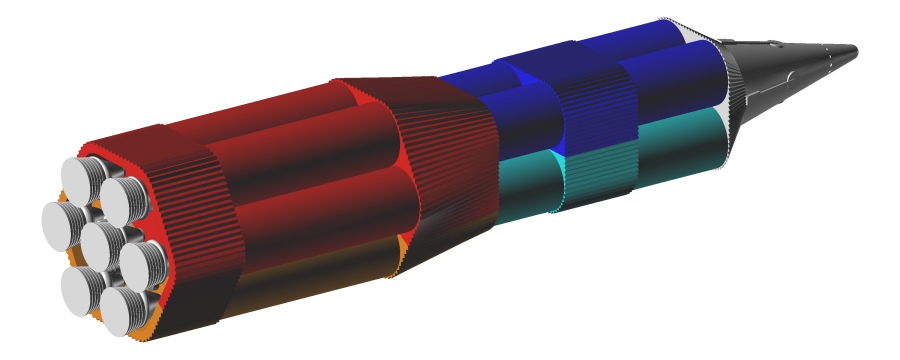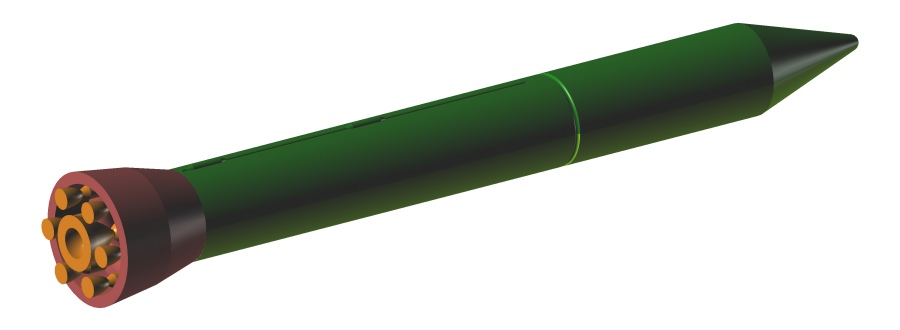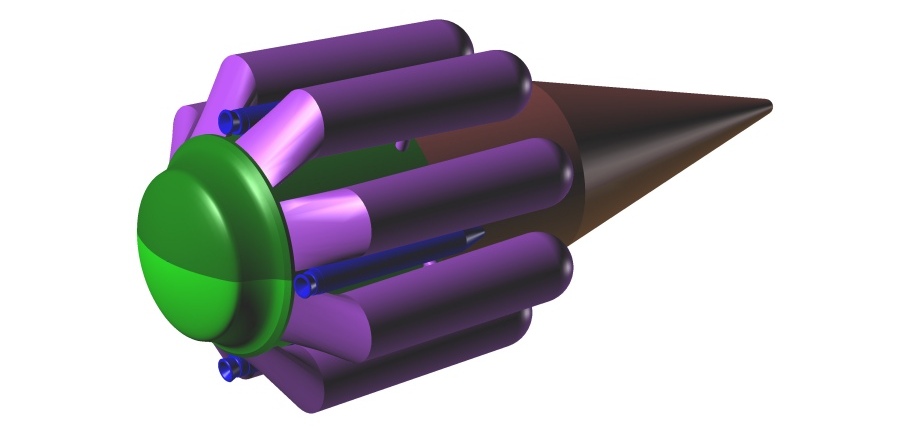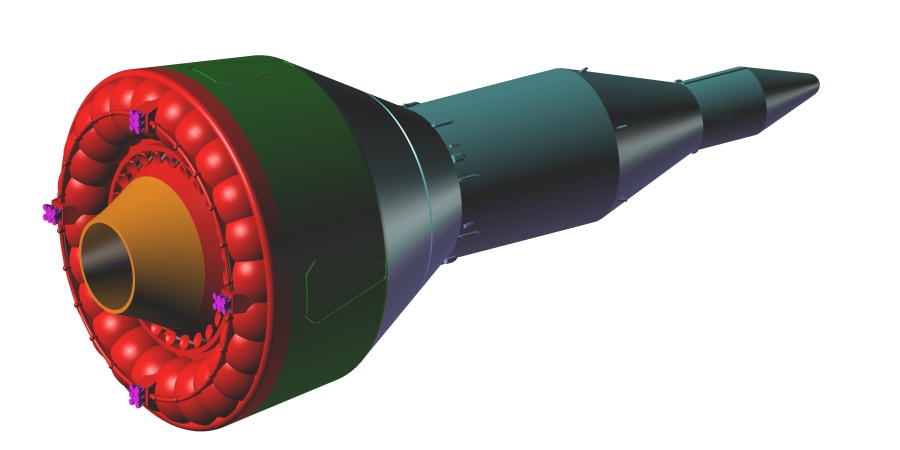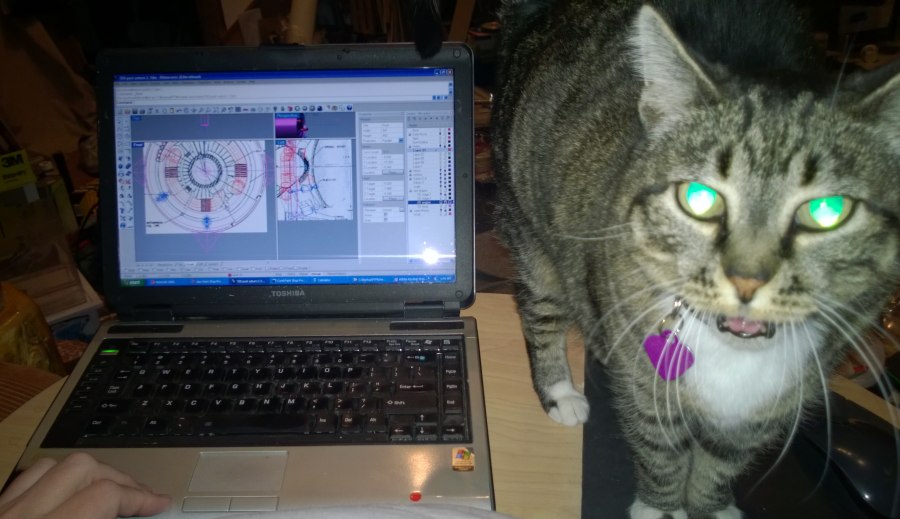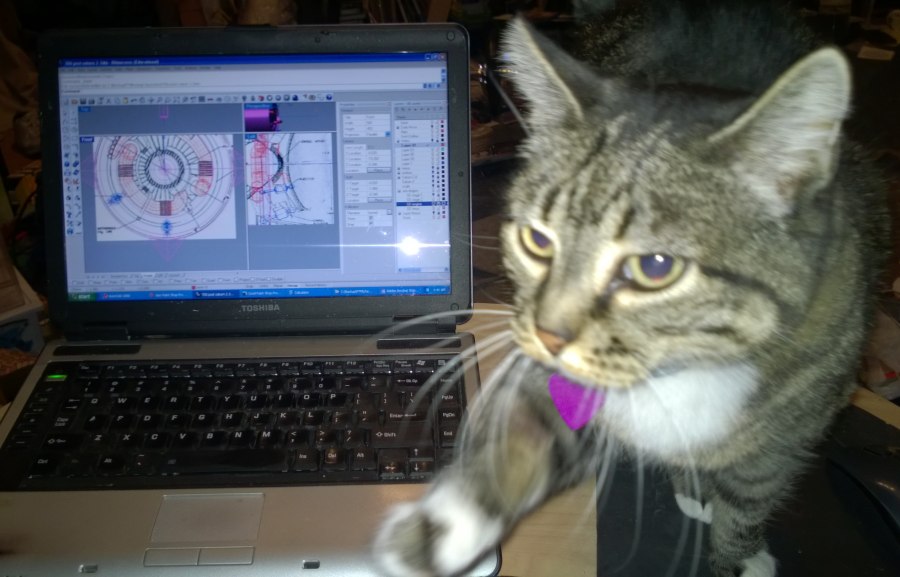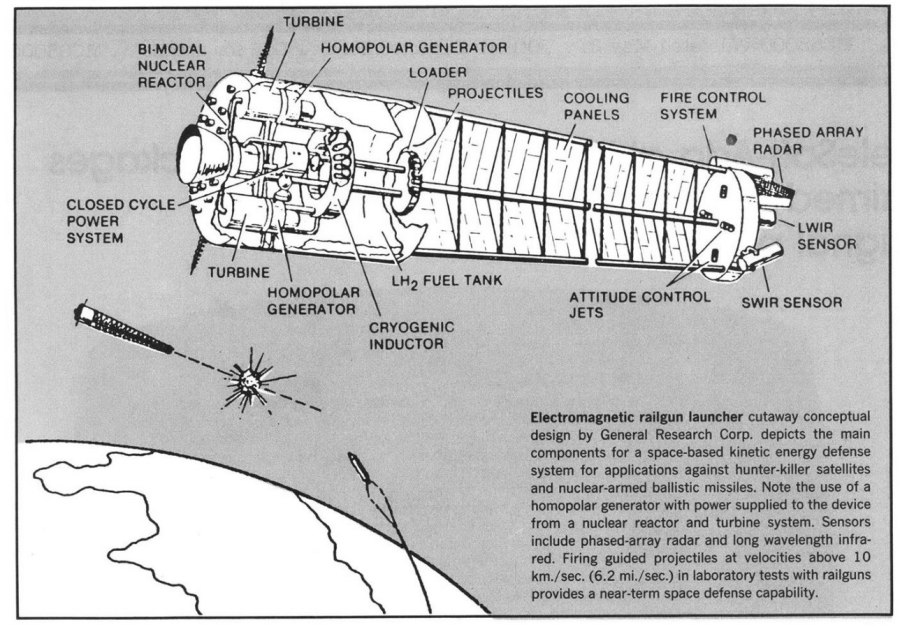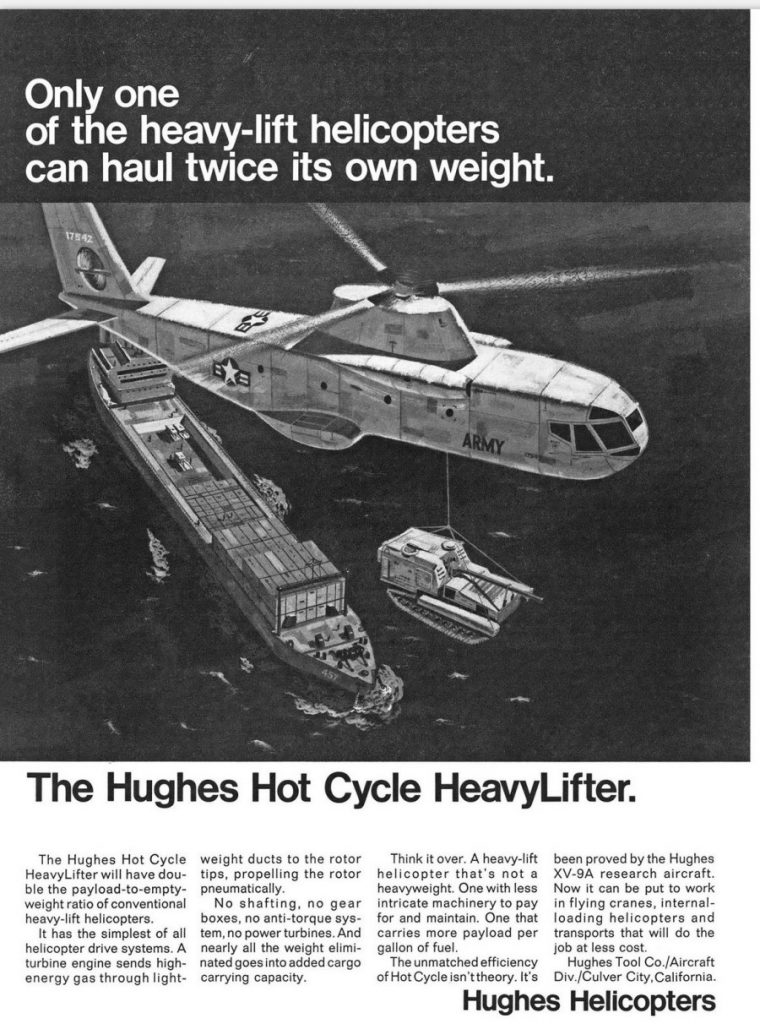A Pratt & Whitney magazine ad from 1964 illustrating a spacecraft using a nuclear powerplant. This seems to depict only the actual powerplant, rather than an integrated vehicle. Some details of note are the large thermal radiators and the nuclear shielding. The reactor itself is the structure on the near end of the boom. Flanking it are two someone oddly shaped boxes; these are radiation “shadow shields” seeming placed and shaped to keep radiation from the reactor from impinging upon the radiators. The conical structure just beyond the reactor is another radiation shield , designed to shadow the main structure.
This appears to not be a painting, but a physical model… one seemingly made from metal. Accuracy is perhaps not 100%.
